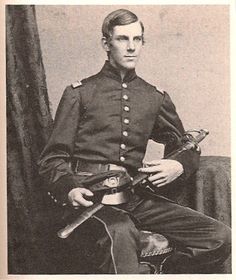Millions of Trump voters were disappointed last week when the U. S. Supreme Court declined to consider a lawsuit filed by the state of Texas against Georgia, Pennsylvania, Michigan and Wisconsin. The suit charged that incompetent and/or corrupt handling of the recent presidential election in those states – producing apparent wins by Joe Biden – harmed the interests of Texas voters who had voted to elect President Trump. Revelation of significant instances of election irregularities in those four states – including illegal changes to their election laws by unauthorized parties – had led Texas to sue. Eventually, 17 other states and 106 Congressmen joined the suit.
Republicans were hopeful that this suit might stop the runaway train of corrupted voting which produced millions of improperly vetted “mail-in” ballots and apparently gave Mr. Biden electoral victory. But after a very brief review the Court declined to hear the case, ruling that Texas lacked “standing” to sue those states. This puzzled many ordinary citizens, including Yours Truly. You don’t have to be a Juris Doctor to see that there must be recourse for citizens of one state who have observed wrong-doing in another state on such scale that it has affected a national election. If that recourse can’t be found in the Supreme Court, where can it be found?
One political wag compared the Court’s ruling to a case where there is an eyewitness to the burglary of a store, and he knows exactly who committed the crime. But when the witness tries to press charges, authorities decline to proceed, saying that he lacks “standing” because it wasn’t his store. This would undo the ancient jurisprudential principle that everyone has an interest in seeing criminals held accountable – whether or not one is directly touched by the crime – because such accountability is an essential pillar of civilization. Thus, the Court appears to be moving in a very dangerous direction.
Nevertheless, this writer was not surprised that the Court declined to intervene in the election-corruption mess. Contrary to popular belief, the Supreme Court is keenly attuned to politics, and has little direct power. There are no Supreme Court Cops who see that the Court’s rulings are obeyed. Adherence to those rulings depends entirely on the good will of the people and their governmental organs. If some of the public disagree with a ruling, they can refuse to obey it with little real consequence, except through the courts. Even then, there may be no personal consequence.
For instance, when the Court ruled that the Boy Scouts of America could legally block homosexual leaders and boys from its membership, the militant gay lobby ignored the ruling and proceeded to press their opposing point of view. Ultimately, they overcame the Court’s ruling by persuading businesses not to donate to the BSA. Threatened with significant loss of needed revenue, BSA national leadership caved and agreed to admit gays. The Supremes’ original ruling had no material effect in the matter.
Most modern Americans are at least vaguely aware that Franklin Roosevelt tried to “pack” the Supreme Court, sometime way back when. But less known is why FDR tried to do that, and how it all went down.
The Supreme Court’s justices were old and conservative when Mr. Roosevelt took office in 1933. Indeed, some belonged to the previous century. Just before FDR’s inauguration, Justice Oliver Wendell Holmes, Jr., a Civil War veteran1, had stepped down from the court at age 91, after 32 years of service. Other members were well up in years, and the president’s progressive ideas did not meet with their approval. During Mr. Roosevelt’s first term they struck down several of his key programs.
This frustrated FDR, so after his landslide re-election in 1936 he floated a radical plan to restructure the Court. Six justices were then past age 70, so Mr. Roosevelt proposed that for each who declined to resign, a new seat should be added to the Court. If none of the elder six resigned, the Court would end up with 15 seats. That would have let FDR change the Court’s complexion completely by appointing six justices friendlier to his policies. Even the addition of just two new seats on the court would have helped him.
The Congress didn’t like FDR’s controversial plan, however, so the Judicial Procedures Reform Bill of 1937 never got out of committee. FDR didn’t get his radical reforms, but he did end up remaking the Court anyway. Although he had not appointed a single new justice during his first term, he succeeded in appointing eight new justices during his second and third terms – more than any other president before or since. His liberal appointments gradually cleared the way for his progressive initiatives.
Many historians believe that it wasn’t really necessary for Mr. Roosevelt to get his radical proposal enacted by Congress. Just threatening the Court was enough. Obviously the justices heard him, understood his threat to the Court, and began to clear out immediately. The rest (as they say), is history.
I recount all this because I believe we’ve seen a similar instance of “Court-threatening” play out in the past week. We’ll probably never know the details of what went down, but my working theory is that Mr. Biden’s people – if not the Big Guy himself – talked turkey with Chief Justice Roberts about what would (or would not) happen, legislatively, depending on how the Court handled the Texas Lawsuit.
Central to that conversation might have been Democrats’ promise not to push court-packing legislation if the Supremes rejected the Texas lawsuit. The grounds for the rejection would have been irrelevant to the Democrat operatives. Only blocking the suit from proceeding would have mattered.
This theory is not merely an invention of my fevered mind. In recent days an anonymous Supreme Court clerk has said the chief justice “fears” that expanding the Court, as Democrats have threatened, will politicize it. Is that report accurate? I don’t know, but it’s entirely logical to suppose that Chief Justice Roberts would make whatever deal he believes necessary to protect the Court. Since (as previously noted) the Court has no real power, its natural posture is defensive.
So much for the Supreme Court being the “ultimate authority” that will set things right for the nation. If the American people want to restore justice to their country, they’ll have to find a way that doesn’t depend on courts at any level. It is a pivotal moment in our history.
Eyes wide open! “Put not your trust in princes...” (Psalm 146:3)
*********
- Captain Oliver Wendell Holmes, Jr., (1841-1935) served in the 20th Massachusetts Volunteer Infantry of the Union Army, during the Civil War. He was wounded four times during his three-year service, including serious wounds received in September 1862, when his regiment was smashed by a Confederate counterattack at Antietam, Maryland. After the war, Mr. Holmes graduated from Harvard Law School. He served as an associate justice of the Supreme Court from 1902 to 1932.

“In our youth, our hearts were touched with fire…” (Oliver Wendell Holmes, 1884)

